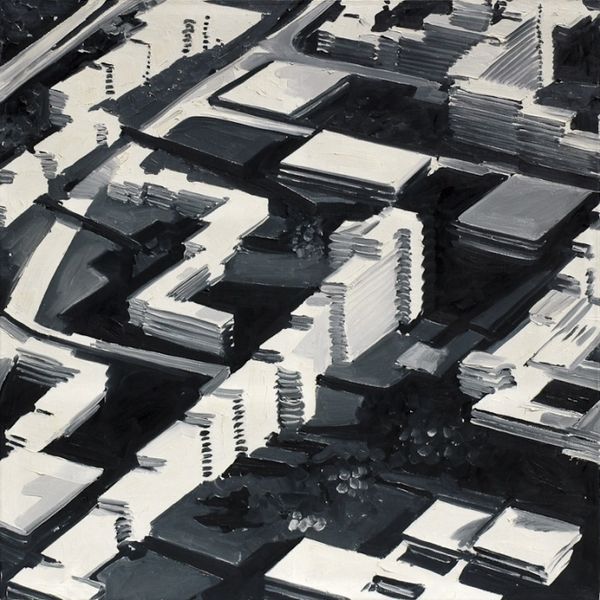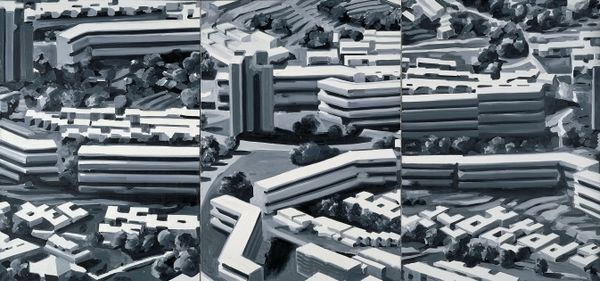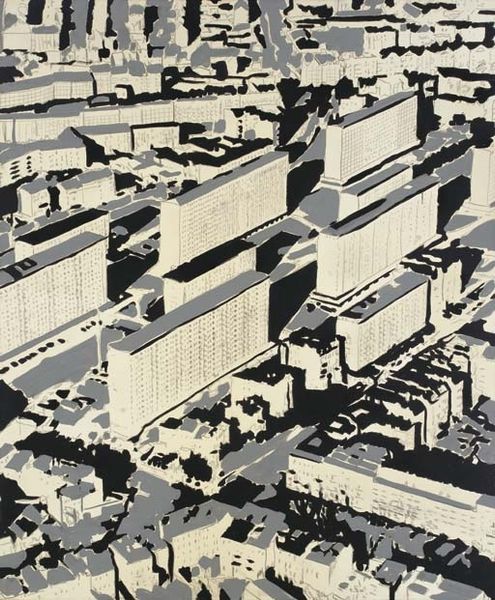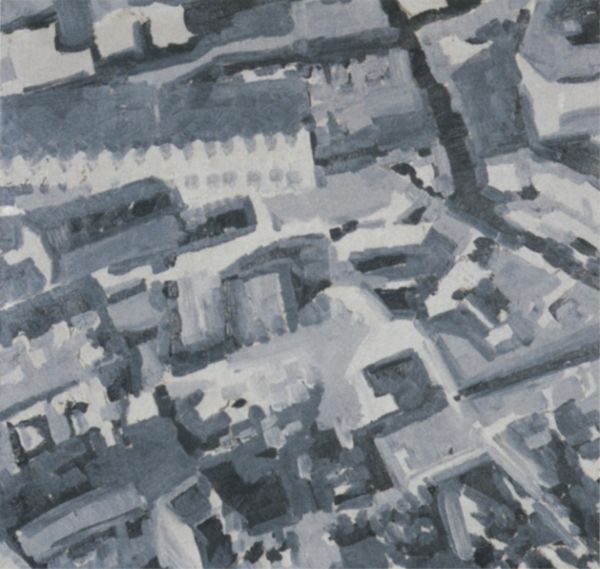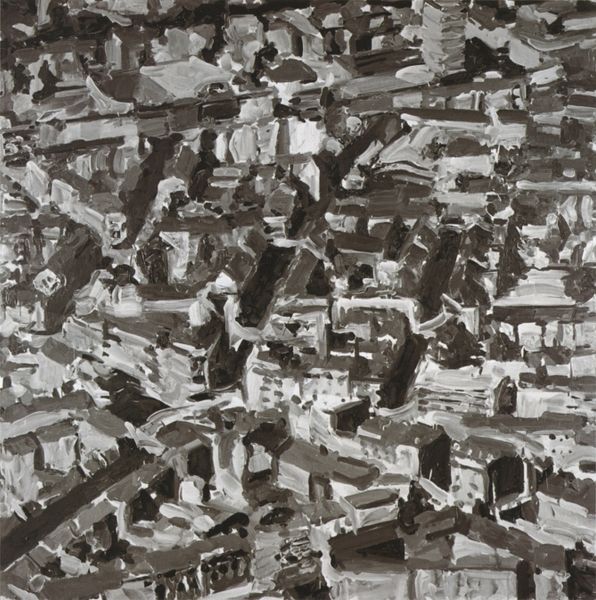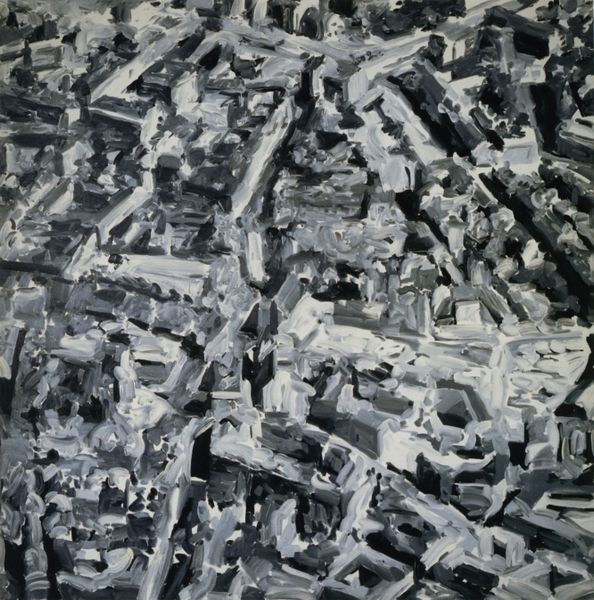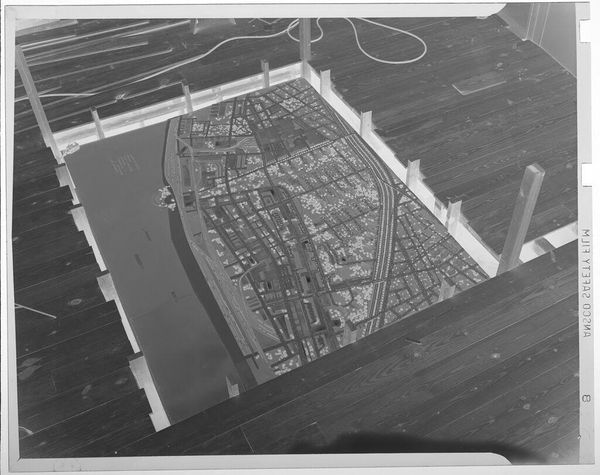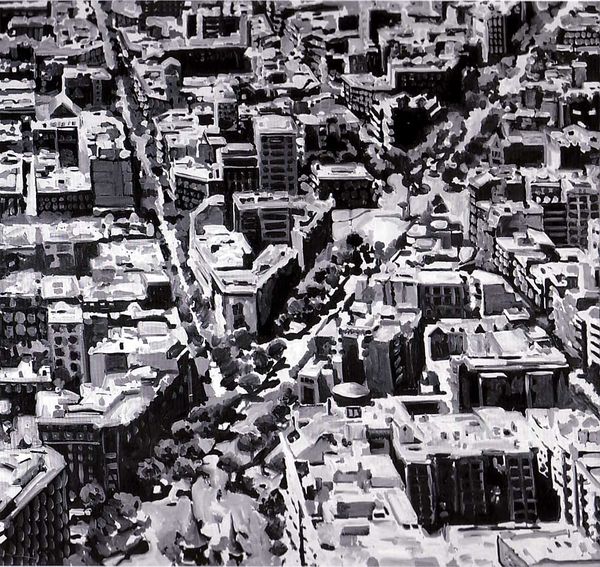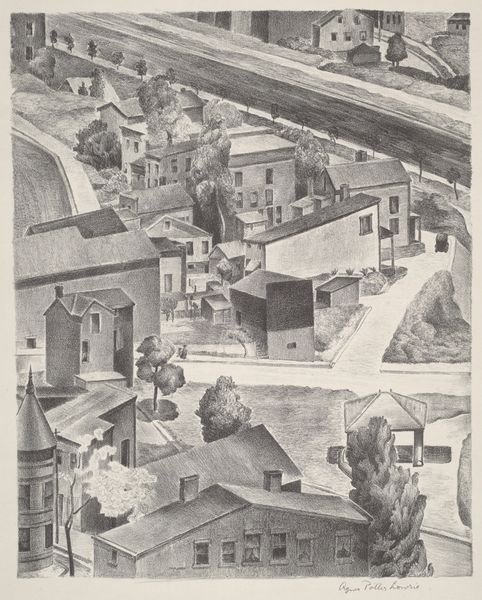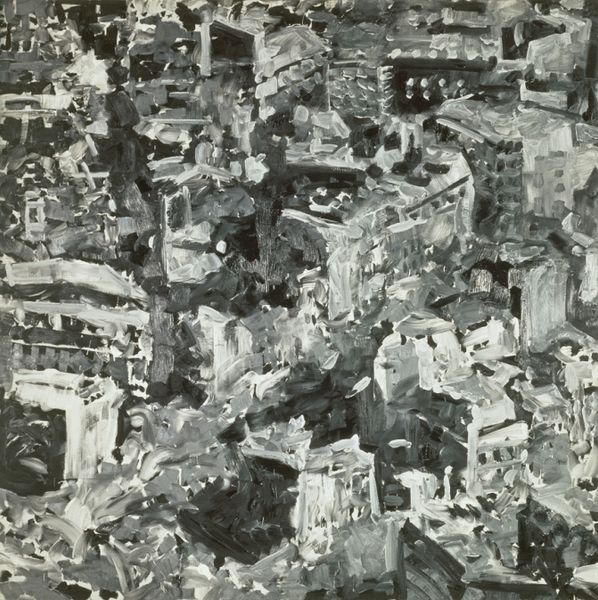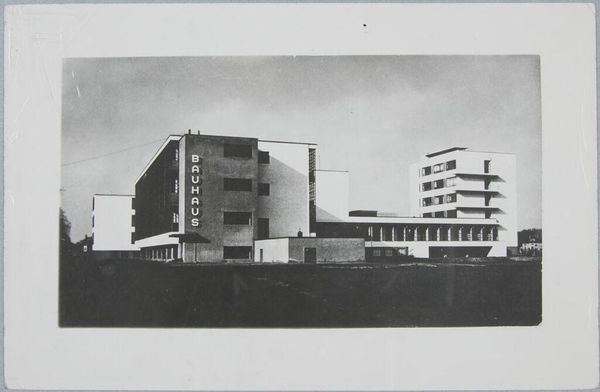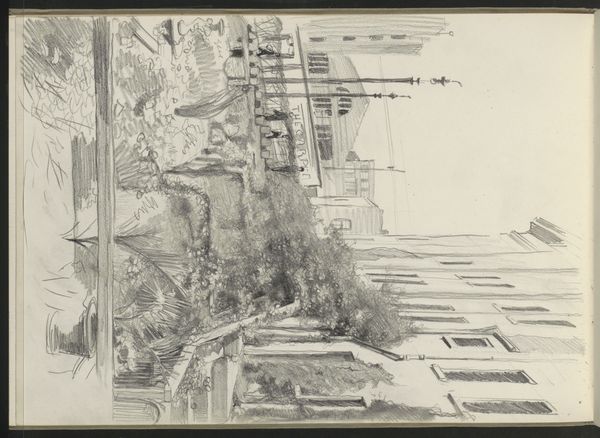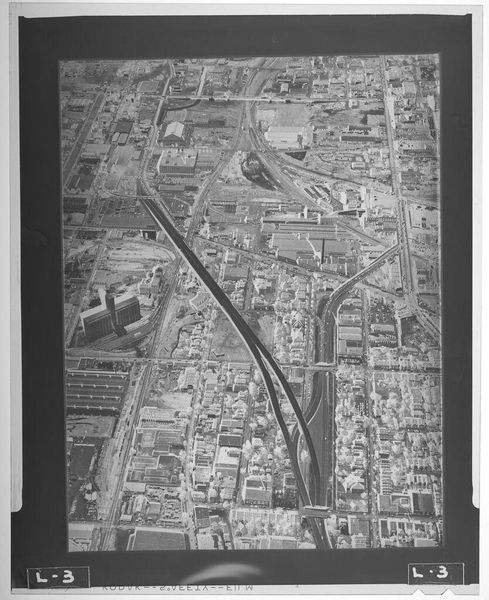
#
capitalist-realism
Copyright: Modern Artists: Artvee
Curator: Looking at Richter's "Stadtbild Sa" from 1969, in oil on canvas, my initial impression is a kind of chilling beauty. All these blocks of monochrome… it’s like an architect's dream turned into a black-and-white film still, all shadows and light. What grabs you first? Editor: Well, that's funny, it also brings to mind architecture—but not dreams of utopia. To me, it's as if he captured the Cold War. Look at the color, or lack thereof, and those geometric shapes dominating everything: there is a clear Soviet aesthetic at play here, even though Richter, with his German roots, may have just aimed at the neutrality and impersonality so en vogue in that period. Curator: Oh, I love that, the Cold War angle! Makes sense given the time, doesn’t it? The geometry almost feels like an oppressive order being imposed. I see how these forms could represent control—the concrete, unyielding face of a divided city, viewed, perhaps, from a surveillance point. Editor: Exactly! And observe how he simplified these forms: buildings becoming mere blocks, avenues nothing but lines of division. The perspective from above does not liberate—instead, it instills in the viewer an idea of constant overview. Almost like someone… or something… is constantly watching over our lives. Curator: And yet, within this cold, surveilled space, there's a certain painterly freedom. The blurred edges, the subtle variations in tone. It prevents it from being completely sterile, it retains that touch of the human element despite its detachment. Maybe he's questioning whether that overarching power is itself even fully in control? Editor: That's beautifully said. And, for me, all that gray invokes a certain mood of melancholy, perhaps? These aerial views also symbolize memory, but viewed from too high above for comfort or intimacy—they become impersonal icons of displacement and power, turning every individual life into a mere data point within the larger scheme of things. Curator: So it's an image wrestling with modern life, I suppose: how cities mold us and maybe alienate us a bit as well. Editor: Precisely. A visual contemplation on the urban landscape, yes, and about what we might lose of ourselves in the process of inhabiting it. Curator: Leaving me to see that while a beautiful scene, the emptiness of such precise geometries might become suffocating to inhabit on one's own.
Comments
No comments
Be the first to comment and join the conversation on the ultimate creative platform.
